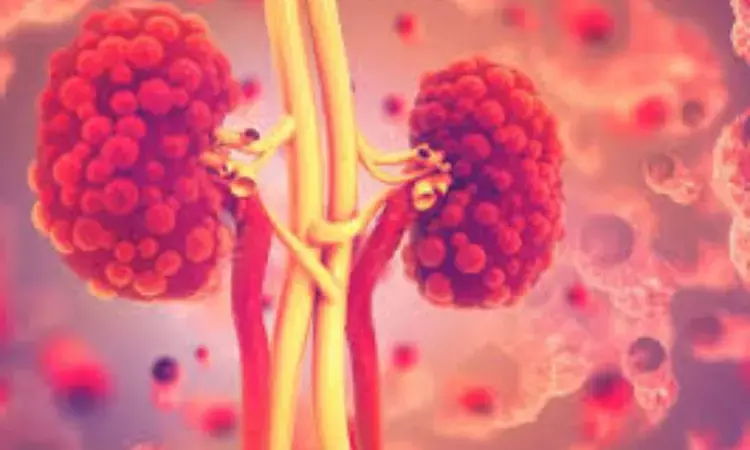- Home
- Medical news & Guidelines
- Anesthesiology
- Cardiology and CTVS
- Critical Care
- Dentistry
- Dermatology
- Diabetes and Endocrinology
- ENT
- Gastroenterology
- Medicine
- Nephrology
- Neurology
- Obstretics-Gynaecology
- Oncology
- Ophthalmology
- Orthopaedics
- Pediatrics-Neonatology
- Psychiatry
- Pulmonology
- Radiology
- Surgery
- Urology
- Laboratory Medicine
- Diet
- Nursing
- Paramedical
- Physiotherapy
- Health news
- Fact Check
- Bone Health Fact Check
- Brain Health Fact Check
- Cancer Related Fact Check
- Child Care Fact Check
- Dental and oral health fact check
- Diabetes and metabolic health fact check
- Diet and Nutrition Fact Check
- Eye and ENT Care Fact Check
- Fitness fact check
- Gut health fact check
- Heart health fact check
- Kidney health fact check
- Medical education fact check
- Men's health fact check
- Respiratory fact check
- Skin and hair care fact check
- Vaccine and Immunization fact check
- Women's health fact check
- AYUSH
- State News
- Andaman and Nicobar Islands
- Andhra Pradesh
- Arunachal Pradesh
- Assam
- Bihar
- Chandigarh
- Chattisgarh
- Dadra and Nagar Haveli
- Daman and Diu
- Delhi
- Goa
- Gujarat
- Haryana
- Himachal Pradesh
- Jammu & Kashmir
- Jharkhand
- Karnataka
- Kerala
- Ladakh
- Lakshadweep
- Madhya Pradesh
- Maharashtra
- Manipur
- Meghalaya
- Mizoram
- Nagaland
- Odisha
- Puducherry
- Punjab
- Rajasthan
- Sikkim
- Tamil Nadu
- Telangana
- Tripura
- Uttar Pradesh
- Uttrakhand
- West Bengal
- Medical Education
- Industry
Tolvaptan use tied to changes in mineral metabolism parameters and increased BMD in polycystic kidney disease

Switzerland: Chronic treatment with Tolvaptan is tied to an increased femoral bone mineral density (BMD), and remarkable changes in both acid-base parameters and mineral metabolism in patients with autosomal-dominant polycystic kidney disease (ADPKD), a recent study in Nephrology Dialysis Transplantation has stated.
Autosomal-dominant polycystic kidney disease is distinguished by a distinctive bone and mineral phenotype. The impact of Tolvaptan treatment on bone mineral density and mineral metabolism is unknown. Matteo Bargagli, University of Bern, Bern, Switzerland, and colleagues analyzed the Bern ADPKD registry, a prospective observational cohort study.
Changes in mineral metabolism parameters and bone mineral density associated with Tolvaptan treatment were assessed using Multivariable mixed-effects regression models. Mineral metabolism parameters were measured at baseline and every 12 months afterward. Dual-energy X-ray absorptiometry was used to determine the bone mineral density at baseline and after three years.
The analysis included 189 participants (122 without and 67 with subsequent treatment with Tolvaptan).
The study demonstrated the following findings:
- Tolvaptan treatment during follow-up was associated with increased bone mineral density at the femoral neck (β 0.092).
- Tolvaptan treatment, in addition, was associated with higher plasma magnesium (β 0.019), urine pH (β 0.214), bicarbonate (β 0.972), and lower parathyroid hormone (β −0.191), fractional urinary magnesium excretion (β −0.473), and 1,25-(OH)2-Vitamin D3 (β −0.126).
"Among patients with autosomal-dominant polycystic kidney disease, chronic tolvaptan treatment is linked with significant changes in both mineral metabolism and acid-base parameters and increased femoral bone mineral density," the researchers wrote their conclusion.
About autosomal-dominant polycystic kidney disease
Autosomal dominant polycystic kidney disease (ADPKD) is a genetic disorder identified by several cysts growing in the kidney. ADPKD is a progressive disease, and symptoms worsen over time. The common symptoms include pain in the back and sides, kidney cysts, headaches, brain aneurysms, kidney stones, high blood pressure, abnormal heart valves, urinary tract infections, and liver and pancreatic cysts.
ADPKD is the kidneys' most common inherited disorder of the kidneys. It is inherited in a dominant pattern. The condition is most frequently caused by changes in the PKD1 and PKD2 genes and less frequently by changes in the DNAJB11 and GANAB genes.
Reference:
Matteo Bargagli, Andri Vetsch, Manuel A Anderegg, Nasser A Dhayat, Uyen Huynh-Do, Nicolas Faller, Bruno Vogt, Pietro Manuel Ferraro, Daniel G Fuster, Tolvaptan treatment is associated with altered mineral metabolism parameters and increased bone mineral density in ADPKD patients, Nephrology Dialysis Transplantation, 2022;, gfac298, https://doi.org/10.1093/ndt/gfac298
Dr Kamal Kant Kohli-MBBS, DTCD- a chest specialist with more than 30 years of practice and a flair for writing clinical articles, Dr Kamal Kant Kohli joined Medical Dialogues as a Chief Editor of Medical News. Besides writing articles, as an editor, he proofreads and verifies all the medical content published on Medical Dialogues including those coming from journals, studies,medical conferences,guidelines etc. Email: drkohli@medicaldialogues.in. Contact no. 011-43720751


